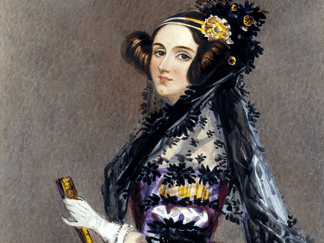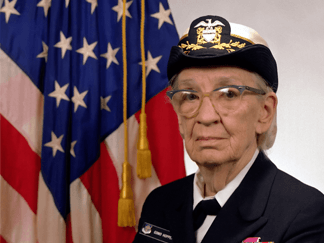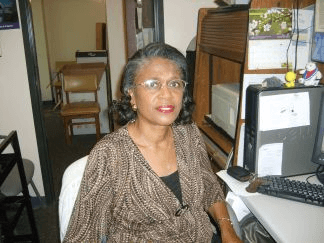Computer science is a historically male-dominated field—however, recently, there’s been a shift towards encouraging young women to pursue STEM (science, technology, engineering, and math) careers. There’s still a long way to go to balance out the number of men in computer science, but we can thank three women for changing the game. Below, we’ll provide a brief history of these three exceptional women, what they accomplished, and why women in STEM should know their names.
1. Ada Lovelace

Source: Wikipedia
In 1843, almost a century before the dawn of the computer age, mathematician Ada Lovelace envisioned a general-purpose computer. Lovelace wrote that this device could not only be programmed to follow instructions, but it could also create by “weaving algebraic patterns just as Jacquard loom weaves flowers and leaves.”
The daughter of Lord Byron, Lovelace had a natural gift for combining art and science, according to her biographer Betty Alexandra Toole. From a young age, Lovelace was fueled by an insatiable curiosity for mechanics and math. Her mother encouraged her interests, providing private tutors and surrounding her with some of the most prominent intellectuals in the British scientific community.
In an age where women were not considered credible scientific thinkers, Lovelace was determined to prove herself. She became the first to recognize that computers could have applications beyond calculation. She subsequently published the first algorithm intended to be carried out by a computer, which would help calculate the seventh Bernoulli number. This led her male colleagues to frequently refer to her skill set as “masculine.”
Later, as a mother of two, she fervently continued her work, anticipating the future implications of computing. Her prophetic writings predicted that computers would one day be able to perform complex calculations faster and more accurately than humans. She also anticipated the possibility of machines using statistical data to progressively improve on certain tasks—otherwise known as AI.
Though the machine she envisioned was not built in her lifetime, her writings earned her recognition as the first computer programmer and guided future generations.
2. Grace Hopper
Source: Wikipedia
A Navy Rear Admiral and talented computer scientist, Grace Hopper invented one of the first compiler related tools and popularized the idea of machine-independent programming languages.
As a child in New York City, Hopper was driven by an intrinsic curiosity that led her to dismantle all of the family’s clocks and attempt to reassemble them. Hopper pursued this passion for mechanics, attending Vassar College and graduating with a degree in math and physics in 1928. She subsequently attended Yale and earned a master’s degree in mathematics. While teaching at Vassar, she continued studying at Yale and became one of the few women of her generation to attain a Ph.D. in mathematics.
The outbreak of World War II compelled Hopper to join the US Naval Reserve. In 1944, she was commissioned as a lieutenant. Due to her mathematical background, Hopper was assigned to the Bureau of Ordnance Computation Project at Harvard University. There, she learned to program a Mark I computer. After the war ended, she continued her work as a research fellow at Harvard, programming the Mark II and Mark III.
In 1949, Hopper went into private industry and oversaw the programming of the UNIVAC computer. It was here that she helped bring her idea for machine-independent programming languages to fruition. The compiler she created became the basis of COBOL, a high-level programming language that’s still in use today.
Hopper collected a wide array of accolades for her work, including honorary degrees from 40 different universities around the world, the National Medal of Technology (she was the first female to attain this honor), and a posthumous Medal of Freedom. But, more importantly, she used her influence to encourage a new generation young women to learn how to program.
3. Marsha Rhea Williams
Source: Tennessee State University
In 1982, Marsha Rhea Williams became the first African American woman to earn a Ph.D. in computer science. She successfully defended her dissertation on “The Design of the Computer Assisted Query Language (CAQL) System,” making her a leading expert on the emerging field of the user experience in querying large databases.
Born in Memphis in 1948, Williams was recognized as a gifted student from an early age. In 1969, she earned a B.S. in Physics from Beloit College and went on to attain her Master’s in Physics from the University of Michigan. She held instructional positions at Memphis State College and Fisk University before earning her Ph.D. in Computer Science at Vanderbilt.
Williams taught at Tennessee State University and the University of Mississippi in Oxford, after receiving her doctorate. She was among the first African Americans to hold a position in Engineering or Computer Science at these universities. In 1990, she became a full tenured professor of Computer Science at Tennessee State, where she pioneered new discoveries and innovations on database function.
Beyond her impressive academic career, Williams worked at IBM and was a National Science Foundation fellow. In addition, she currently serves as a board member for the Data Processing Management Association.
Williams was not content with her personal successes—she continually strove to help others gain access to education. She visited communities of color to speak, mentor, and help increase participation in STEM fields. She founded the Association for Excellence in Computer Science, Math, and Physics and she advises the National Society of Black Engineers.
Carrying the Torch
These inspiring women broke down barriers and paved the way for future generations of computer scientists. But there’s still work to be done. At DialogTech, we place a premium on diversity and inclusion—these values make our team stronger and allow us to seat a wide variety of viewpoints at our table. Both intellectually and culturally, we seek the brightest minds in the industry. We’re proud to say that over 31% of our workforce is female and this number has been rising steadily over the past few years.

